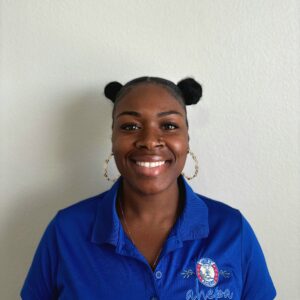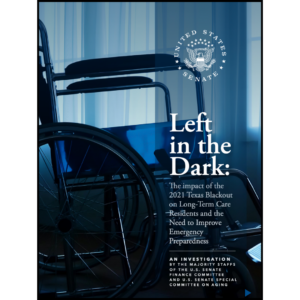Steps Toward Energy Savings
| Interview with John Grillo, National Energy Services Company, Inc. |
| “Energy savings” – the term seems almost to be an oxymoron in today’s tumultuous, impossible-to-comprehend energy marketplace. If rates aren’t whipsawing up and down for no obvious reason, it’s a matter of waiting for the ultimate shoe to drop: the rate hikes that ultimately put you out of business. To exert enough control over the situation to achieve meaningful savings can seem to be a dream that’s far out of reach. Six years ago, though, a firm called National Energy Services Company, Inc. (NESC) stepped into the long-term care marketplace with a plan for achieving just that. Focusing on very specific approaches to energy conservation and purchasing, the company aims to help small-to-medium-sized providers sur-vive the marketplace minefields. Recently, NESC President John Grillo discussed these approaches in an interview with Nursing Homes/Long Term Care Management Editor Richard L. Peck. Peck: Generally speaking, what opportunities are out there for facilities to achieve real energy savings these days? Grillo: On the conservation side, there are two that we’ve found to have the fastest payoffs and most improvement in service: upgraded lighting using energy-efficient T8 fluorescents and installation of ozone laundry equipment. You can also realize savings from more energy-efficient boiler systems and HVAC, but the payoff here takes more time than many facilities are willing to give-7 to 10 years and more. In fact, these upgrades generally occur only if there’s a major remodeling or if the older equipment is breaking down. With lighting and laundry operations, though, we’ve seen the upgrades paying for themselves in a much shorter time frame. Peck: Would you expound more upon the lighting alternative you recommend? Grillo: T8 fluorescents offer not only financial savings-a 120-bed facility, for example, would see savings in the neighborhood of $1,200 a month, $15,000 a year-but improved quality of life, as well. T8 fluorescents are more color corrected than standard fluorescents; on a color rendering index (CRI) scale of 100 for natural lighting, T8s come in at the 80s, compared with the mid-60s for standard lighting. The difference can be amazing: better, clearer vision for those with macular degeneration, glaucoma or cataracts; less glare; and even a healthier appearance for residents. Administrators have told us of families commenting on how well residents look; they have some color in their cheeks, rather than that gray, ashen look. As for financial payback, we find it takes about 28 to 36 months, depending on local electric rates and facility age. Generally, the older the facility, the more watts used to light a given space. Today’s energy-efficient lighting produces dramatic savings. Peck: What about ozonated laundry? That’s an idea that was introduced several years ago but didn’t seem to take off at first. Grillo: We’ve introduced it successfully for three years now, and think we know why it didn’t take off at first. Manufacturers at the time were still using the hospitality industry as the model and were claiming 100% savings on hot water usage. We’ve found, in the long-term care setting, that 85 to 90% savings is closer to reality; you still need hot water to remove the solids from reusable briefs and pads. But these savings are still pretty substantial when you consider that the typical 120-bed facility processes about 1,000 pounds of laundry a day, that each pound requires three gallons of water and that two-thirds of that water is heated. We’ve also learned more since then about the proper mix of chemicals, although chemical use in general is considerably reduced with ozone systems. We have also discovered that there is no need for oxygenated bleach or for holding tanks that didn’t work very well for storing ozone; we now use direct injection. Ozone remains safe and highly effective, producing much softer whites and linens, for example. Drying time, too, is considerably reduced. A 120-bed facility can realize savings amounting to $18,000 a year. The important thing with this installation is to give staff the proper in-servicing at the start. Peck: What about energy purchasing; how might savings be achieved there? For example, would smaller facilities be well advised to join together in purchasing groups to achieve better rates? Grillo: Nursing home purchasing groups probably wouldn’t have much impact on pricing. Typically, these facilities are not very big energy users, compared to large companies and industries, and they are too geographically scattered to be able to focus on rates in particular localities. Rates themselves don’t have a lot of give these days; they’re governed by margins so razor-thin that some energy companies are going out of business. Savings can be realized through careful negotiation of contract provisions. Maybe facilities don’t like those built-in penalties for overuse; they don’t want automatic renewal of their rates every year, or they don’t like being on a floating index that keeps rates floating upward; they don’t like having penalties for underuse that, over time, eat up all their savings. All of these contract provisions exist in one form or another from place to place, and nursing homes grouping together to work on this might have the leverage it takes. Where a company like ours can come in handy is in helping facilities identify the opportunities available. NH For more information, phone (800) 758-9288 or visit www. nescorporation.com. |
I Advance Senior Care is the industry-leading source for practical, in-depth, business-building, and resident care information for owners, executives, administrators, and directors of nursing at assisted living communities, skilled nursing facilities, post-acute facilities, and continuing care retirement communities. The I Advance Senior Care editorial team and industry experts provide market analysis, strategic direction, policy commentary, clinical best-practices, business management, and technology breakthroughs.
I Advance Senior Care is part of the Institute for the Advancement of Senior Care and published by Plain-English Health Care.
Related Articles
Topics: Articles , Facility management , Operations











